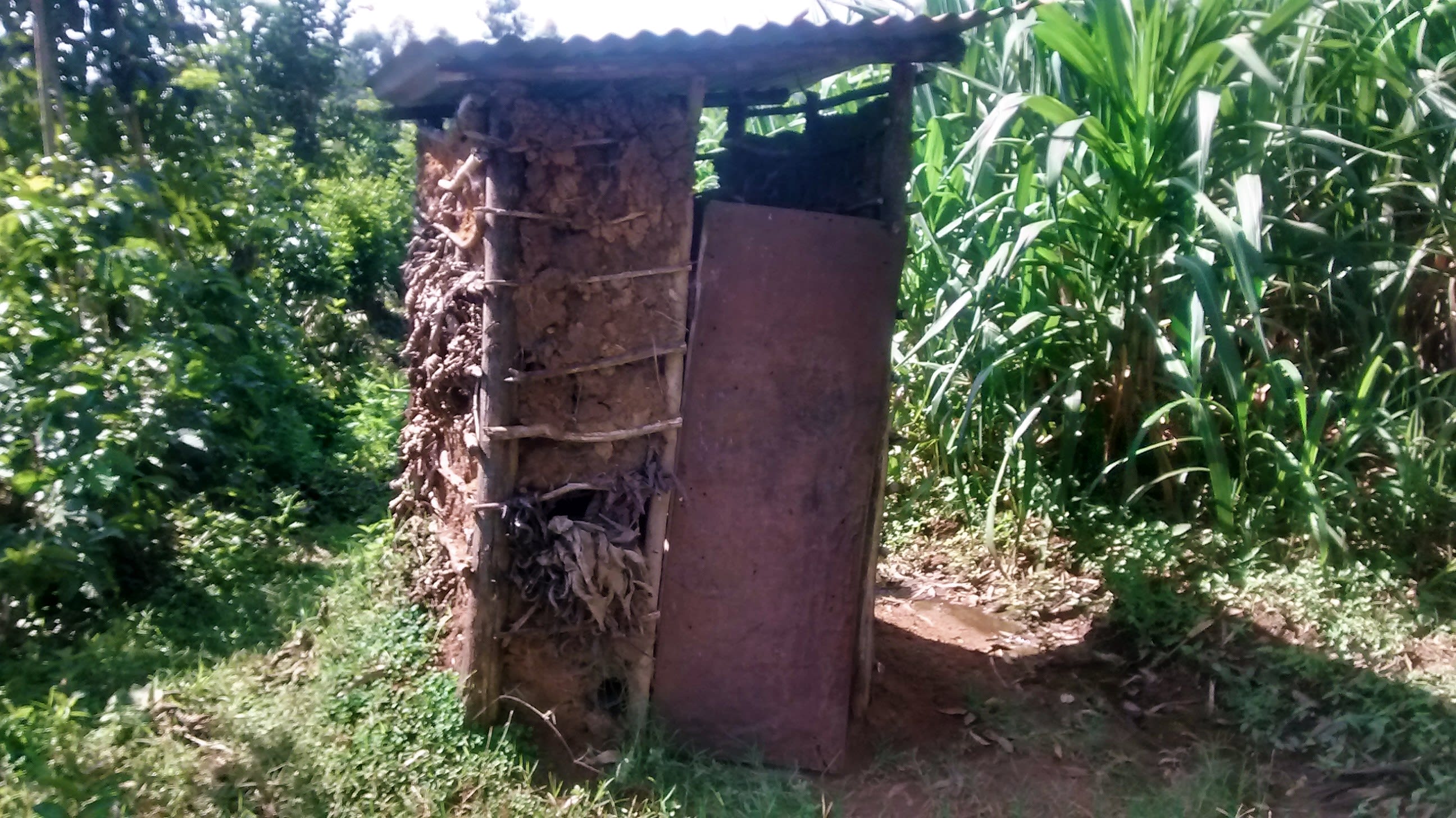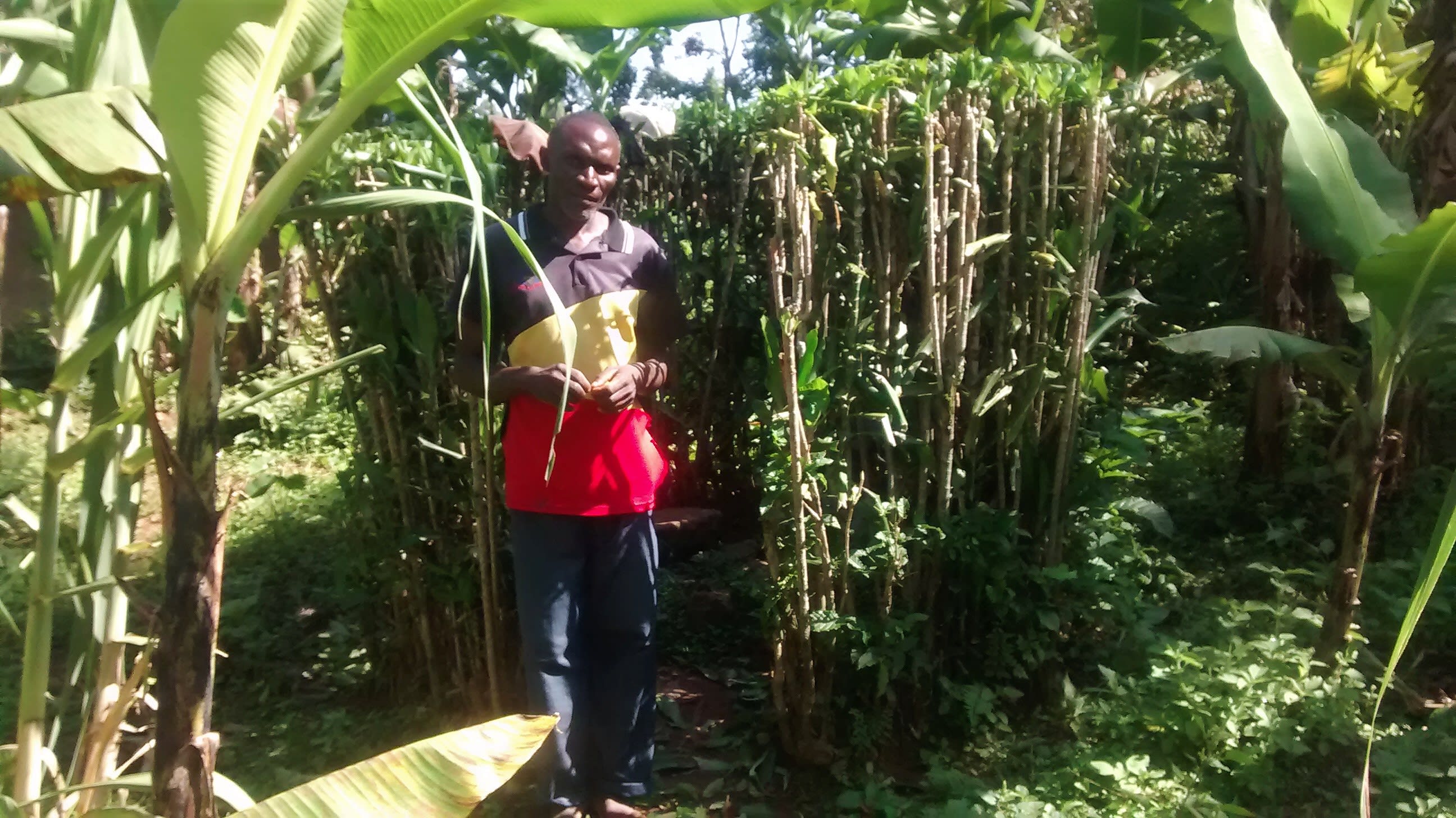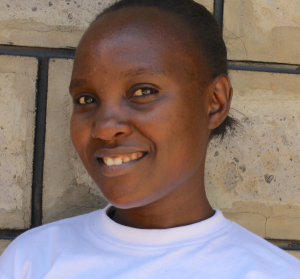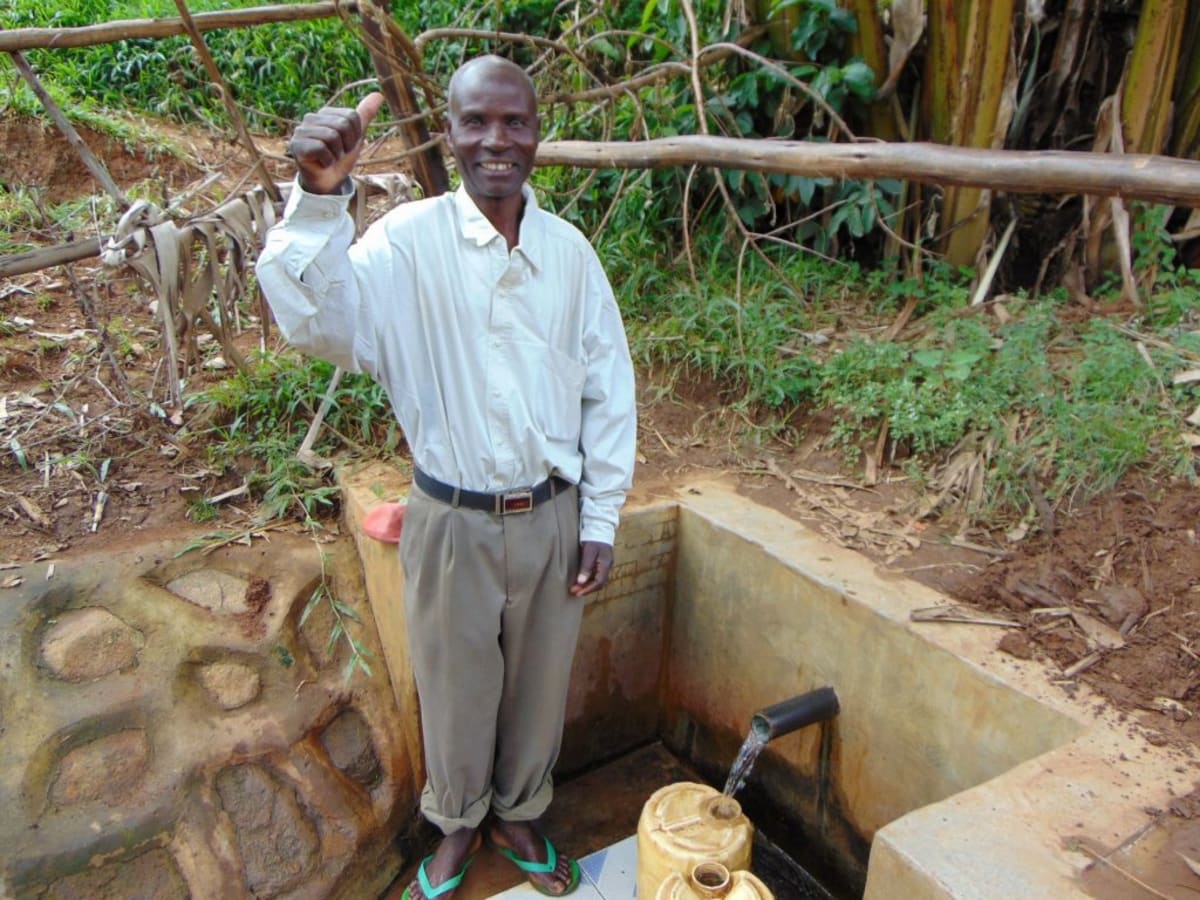Thomas Spring is located in Makhumbi sub-location in Malava sub-county. It serves some 348 people in the community.
For this community, a normal day starts by getting up early in the morning, at about 6am, and going to their farms.
If they are not tilling their lands in preparation for planting, they are harvesting the ready produce from the farms. After which, the food is stored for future use or taken to the markets to be sold.
Many people in this community engage in small-scale dairy farming, poultry keeping, and cash crop farming tea and sugar cane plantations to make a small income. Though the income from the sale of these crops is low, the community members adjust their budgets so as to meet their daily family needs and hence keep life going.
They also grow bananas and practice subsistence farming of vegetables, maize, beans, groundnuts and other crops meant for eating.
Water
Thomas Spring is an unprotected water source less than a mile away from most of its users. Due to the fact that many of the people are low earners, efforts made in the past to try and protect this spring did not bear any fruits.
People use jugs to draw water and pour them into the containers then carry it home for various uses. The water is stored at home in plastic containers, often without lids.
The water is contaminated by surface runoff from nearby farms. The water gets turbid after a few scoops and some people come from their farms with dirty hands and legs to clean themselves in the spring.
As a result, many people suffer from stomachache, diarrhea, and fever. When they go to get tested, they are diagnosed with the waterborne disease typhoid.
Sanitation
Fewer than half of households have latrines. The few that exist are often semi-permanent in nature, with floors made of wood, walls of mud, roofs of old iron sheets, and doors made of old rags. In some cases, the doors are made of old iron sheets.

Other latrines are improvized - spots that utilize brushes and plants to establish a private place for people to relieve themselves.

Most homesteads have clotheslines and dish racks. People throw the garbage into the banana plantation to compost into manure.
They were excited about the idea of improvising hand washing stations and are eager to learn more about hygiene and sanitation.
Here’s what we’re going to do about it:
Training
Community members will attend hygiene and sanitation training for at least two days. This training will ensure participants have the knowledge they need about healthy practices and their importance. The facilitator plans to use PHAST (Participatory Hygiene and Sanitation Transformation), CLTS (Community-Led Total Sanitation), ABCD (Asset-Based Community Development), group discussions, handouts, and demonstrations at the spring. One of the most important topics we plan to cover is the handling, storage, and treatment of water. Having a clean water source will be extremely helpful, but it is useless if water gets contaminated by the time it’s consumed. Handwashing will also be a big topic.
Training will also result in the formation of a committee that will oversee operations and maintenance at the spring. They will enforce proper behavior around the spring and delegate tasks that will help preserve the site, such as building a fence and digging proper drainage. The fence will keep out destructive animals, and the drainage will keep the area’s mosquito population at a minimum.
Sanitation Platforms
On the final day of training, participants will select five families that should benefit from new latrine floors.
Training will also inform the community and selected families on what they need to contribute to make this project a success. They must mobilize locally available materials, such as bricks, clean sand, hardcore, and ballast. The five families chosen for sanitation platforms must prepare by sinking a pit for the sanitation platforms to be placed over. All community members must work together to make sure that accommodations and food are always provided for the work teams.
Spring Protection
Protecting the spring will ensure that the water is safe, adequate and secure. Construction will keep surface runoff and other contaminants out of the water. With the community’s high involvement in the process, there should be a good sense of responsibility and ownership for the new clean water source.
Fetching water is predominantly a female role, done by both women and young girls. Protecting the spring and offering training and support will, therefore, help empower the female members of the community by giving them more time and efforts to engage and invest in income-generating activities.

 Protected Spring
Protected Spring
 Rehabilitation Project
Rehabilitation Project









































